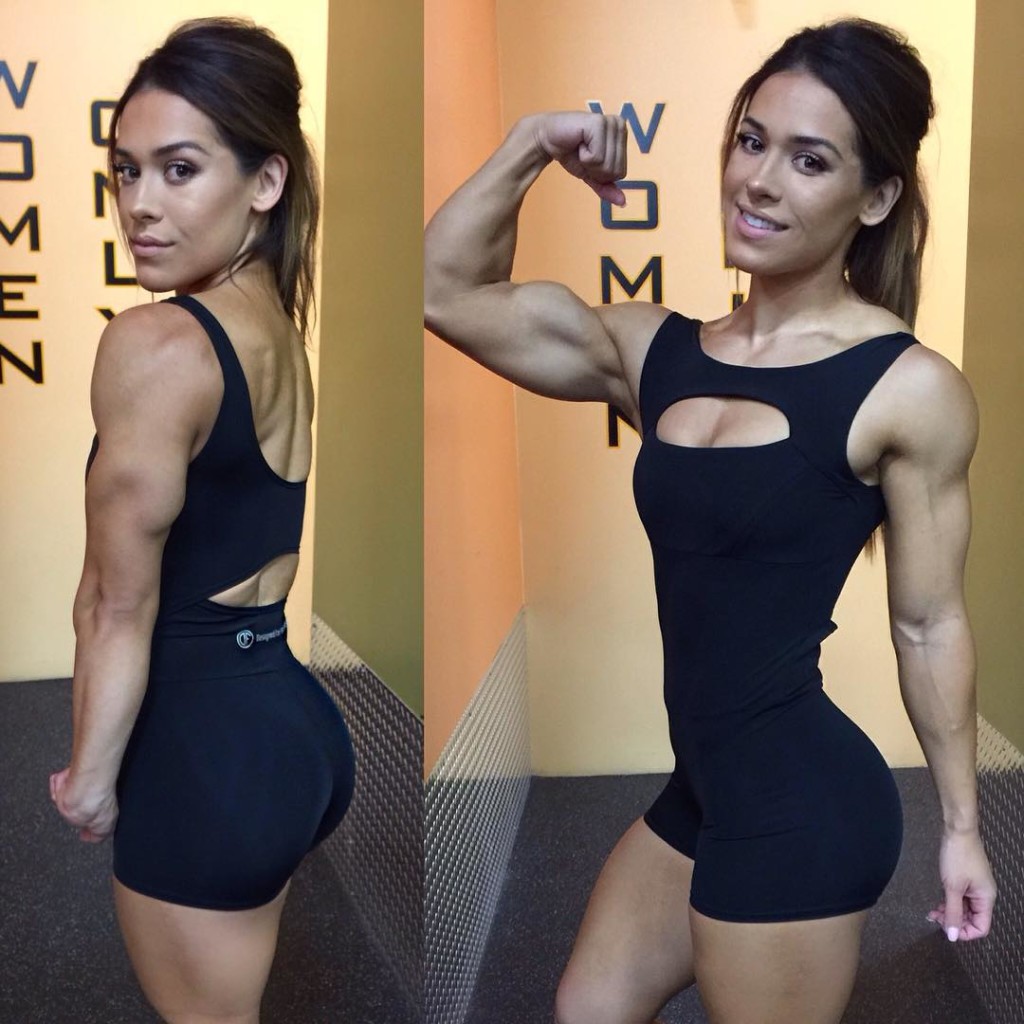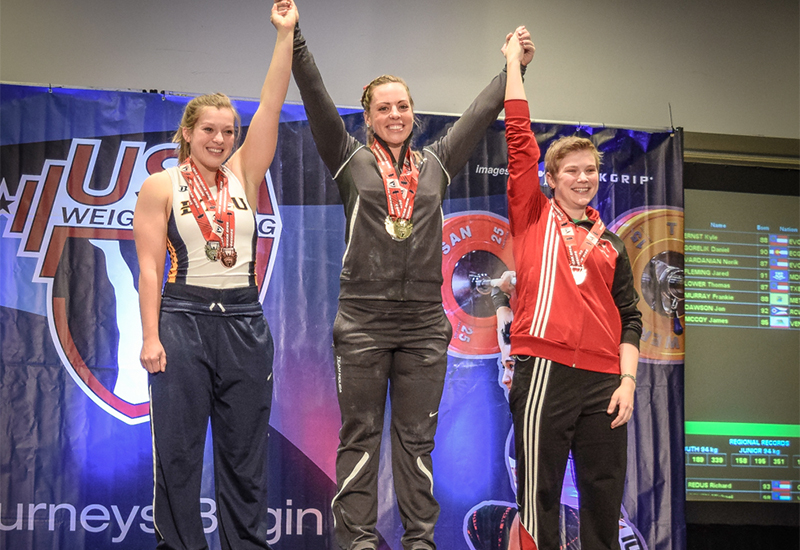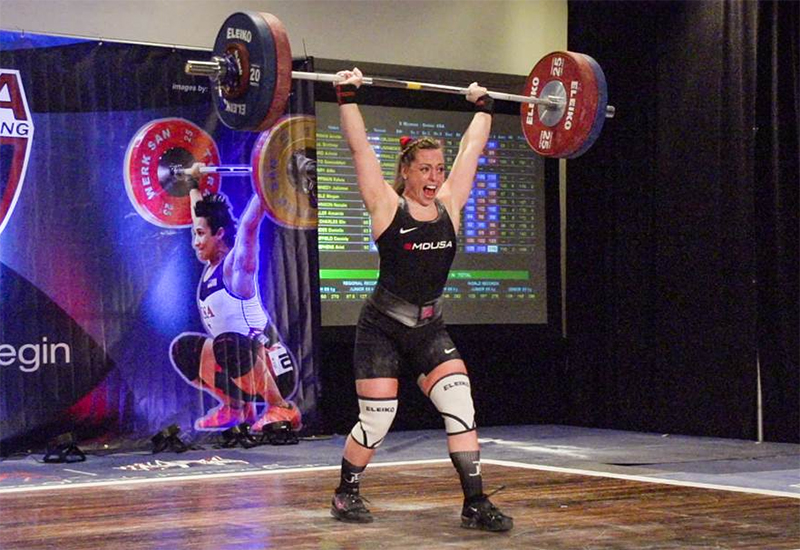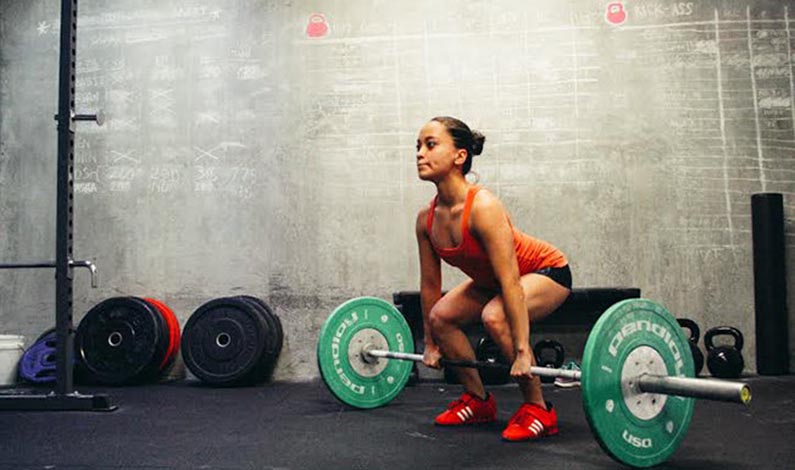 Weightlifting is increasingly popular among women. Are your perceptions outdated?
Weightlifting is increasingly popular among women. Are your perceptions outdated?
Erin Parker can squat the weight of the average man, plus 10 pounds. She can hoist a 127-pound barbell over her head. If she wanted, she could lift most people she meets.
By all accounts, Parker, a 25-year-old weightlifter in San Francisco, is strong. And at 102 pounds and only 4 feet 11 inches tall, she’s also tiny.
“I think people are surprised,” says Parker about the typical reaction to her involvement in the sport, which brought her to the District of Columbia to compete in USA Weightlifting’s American Open Championships last weekend. The truth, though, is that “weightlifting is a sport for everyone,” she says. “You can be any weight or size and there’s a weight class for you.”
Myth No. 1, debunked.
You can also be a “girly girl,” says Megan Gallagher, a 26-year-old communications director in the District of Columbia who sports makeup when lifting. “You don’t have to fit a certain mold to show up to the gym and try to be strong. You don’t have to be a certain kind of person.”
Myth No. 2, shot down.
Here are some other myths – and why their grounding is weak:

Myth No. 3: Weightlifting is not a sport.
Over half of USA Weightlifting’s national event competitors are women, says Phil Andrews, the organization’s director of events and programs. That wasn’t always the case. “It’s been a huge growth on the female side,” he says.
Much of the surge is attributable to the popularity of CrossFit, which has drawn women to heavy weights and competitions, says Cara Heads Slaughter, a weightlifting coach and owner of CH Fitness and Performance in Arlington, Virginia. The annual televised CrossFit Games – promoted as a competition to find “the fittest on earth” – make these women even more visible, she says.
“[People] are able to sit there and go, ‘Hey, I want to do that’ in the same way that someone does that when gymnastics is on television, or basketball,” says Slaughter, who competed in the 2000 Olympics in Sydney, the first time weightlifting was open to women. “We’ve had so much more exposure through CrossFit that it’s creating interest and opportunity for young girls and women to compete with barbells.”
Still, plenty of people don’t know exactly what women who lift actually do. “Nobody really understands it,” says Leah Cochran, a 29-year-old competitor at the 2014 American Open who works at the U.S. Department of Energy. “All the people at work think I’m a bodybuilder, which is completely different from what we do.”
While bodybuilders usually train to sculpt their physique, the goal of Olympic weightlifters is to perform two specific movements: the “snatch” – raising the weight from the floor to above the head without pause – and the “clean and jerk,” or lifting the weight from the floor to the shoulders before pushing it up over the head. (Powerlifting, which doesn’t have an Olympic track, includes the squat, deadlift and bench press.)
“I want more people to know that weightlifting is a sport and that powerlifting is a sport because most people think lifting weights is for aesthetic reasons only and for bodybuilding, but it’s not,” says Parker, who co-founded Spitfire Athlete, a health and fitness company that builds products like apps that promote strength among women. “That’s just one sliver of what you can do.”
Myth No. 4: Weightlifting makes women “bulk up.”
When Slaughter first started weightlifting in high school in 1991, her family was supportive. But some of her friends’ parents wouldn’t have allowed it, reasoning that they didn’t want their daughters to become “big and bulky,” or that weightlifting “is not what girls do,” Slaughter says.
That’s a bad reason, since women don’t have the hormonal makeup that supports excessive muscle growth, Slaughter says. Plus, it takes plenty of hours, dedication and seriously heavy weights to get significantly stronger. A new client of Slaughter, for instance, might take a year to meet her goals – and the work will likely result in fat loss in addition to muscle growth.
“The female body will only transform to the extent that you put the hours and the work, the volume, the weight [and] the repetitions into it, but we’re limited by our hormones,” Slaughter says.
It’s only when women alter their hormonal makeup that they can pack on the muscle like men. “That’s where weightlifting or bodybuilding got a bad name: When some women chose to use drugs and then it altered their physique so dramatically that [those bodies] became the main image of what women lifting weights will produce,” Slaughter says.
Even if women weightlifters do develop visible muscle, what’s it to you? How women look is beside the point in the sport, lifters say.
“The focus is the technique – what can I get over my head? What can I lift up?” says Emily Baskin, a group exercise instructor and coach at CrossFit Balance gym in the District of Columbia. “And sure, our bodies change along with it, but I’m not really paying attention to how my body changes – I’ll notice it, but that’s not my goal.”
For Nicole Tennant, a 16-year-old American Open competitor from Leavenworth, Kansas, comments about her strong stature are taken as compliments. “I normally get the ‘Oh, you’re big and muscular,’ but to me, that’s good,” she says. “People always say, ‘Strong is the new sexy,’ and I agree.”

Myth No. 5: Weightlifting is intimidating.
Gallagher’s gym has two areas: One with typical gym equipment and one with a CrossFit studio. Some of her friends steer clear of the latter, but she wishes they wouldn’t.
“The community is very, very friendly, even though there are loud noises, and it gets scary at times,” she says. In one recent training session, for example, the gym went silent when Gallagher attempted a new personal record. When she landed the lift, everyone cheered and offered hugs.
“It’s just so cool how everyone’s invested in each other and wants each other to do really well, even though it can kind of seem like this isolating, weird culture,” says Gallagher, who competed in the powerlifting segment of last weekend’s competition. “That’s a misconception that I wish wasn’t there because I think, especially for women, it has so many benefits.” Those benefits include a sense of mastery and control, a boost in confidence and simply being more physically capable.
The supportive weightlifting community also extends beyond the gym walls to social media. Gallagher posts videos and photos on Instagram, Reddit and YouTube, and Parker helped launch a Facebook group to encourage strong women – whether they’re weightlifters, cyclists or martial artists – to inspire each other with their accomplishments.
“The understanding that strength is a beautiful thing just didn’t gel for the longest time before we were a really connected society,” she says. “Now you can join a Facebook group or any fitness community and see so many strong women who are … setting records and then you think, ‘Oh, if they did that, then I can do it, too.’ It makes you realize that it’s possible.”
Courtesy of: US News
